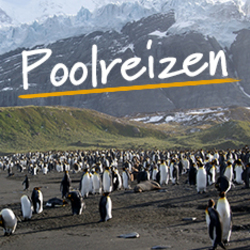Maak kans t/m 5 januari
BekijkActivities
- Culture
- Cultural Wonders
- Festival Holidays
- — See the unforgettable Taj Mahal, one of the New Wonders of the World — Go wildlife watching in Sariska National Park — Take a boat ride along the mystical Ganges at Varanasi — Explore the major landmarks in the Pink City of Jaipur
Food
-
1
Start Delhi; transfer to Sariska National Park
Our adventure begins in Delhi, a thrumming city chock full of architectural masterpieces. Meet the group either at a named meeting point (normally Hotel Bloom - Karol Bagh) or Delhi Airport – see the Joining Instructions for more information. We than drive to Sariska National Park, which may take between three and four hours depending upon traffic. If you don’t want to do this journey straight after your flight, we recommend spending a pre-tour night in Delhi – speak to your sales representative to book. Accommodation: Sariska Tiger Camp (or Similar)
-
2
Morning game drive around Sariska National Park; drive to Jaipur in the afternoon
Sariska National Park was declared a sanctuary in 1955 and is home to nilgai, wild boar, jackals, hyenas and chowsingha (four-horned antelope). The game drive will be in the buffer zone, mainly on sealed roads. Although these departures operate during the rainy season, the crowds are reduced and those with an interest in bird life will find an abundance in Sariska. In the afternoon, we drive to Jaipur and transfer to our hotel. Accommodation: 7 Apple Hotel – Jalmahal (or similar)
-
3
City tour of the Jaipur landmarks; free time to explore
Built in the late 18th century, Jaipur is a planned city of broad avenues constructed of sandstone and later painted pink. On our city tour led by a local guide, we visit the City Palace in the centre of Jaipur, formerly the residence of the Maharaja, now a fine museum containing rare manuscripts, paintings, royal garments and weapons. Close to the palace is one of the most intriguing sights in India, the observatory of Jai Singh. This is an assembly of immense astronomical instruments made of marble and brass set in a pleasant garden. We also see the impressive landmark, the Hawa Mahal (Palace of the Winds). We then visit the hilltop Amber Fort, which sits above a lake a few miles from the main city. The grand 16th-century palace complex combines Hindu and Muslim design and is made from pale yellow and pink sandstone. After, the tour leader generally takes the group to a textiles factory, which employs more than 400 locals. Tour the building, seeing every step of the process from block printing to shipping. At the end, you can browse the shop and pick up anything from a complete outfit to handmade notebooks made from off-cuts. Accommodation: 7 Apple Hotel – Jalmahal (or similar)
-
4
Dawn walking tour of Jaipur; transfer to Agra via Fatehpur Sikri
We start as the sun rises, heading out for a dawn walking tour led by a local guide as the Pink City wakes. See the local people start their day and the rituals that take place in early morning markets and small temples. We visit different chowkris (blocks) within the walled city, with the chance to interact with different artisans. We return to the hotel in time for a later breakfast before check out, then drive to Agra via Fatehpur Sikri, Emperor Akbar’s deserted royal city. This impressive and well-preserved citadel became his capital in 1571, after the blessing of a local Moslem holy man correctly predicted the birth of a longed-for son: his successor, the Emperor Jehangir. The mosque, designed to hold 10,000 worshippers; the palaces; residences; and halls of audience are all made of decorative red sandstone. But this magnificence only lasted 14 years. In 1584, Akbar left Fatehpur Sikri to secure his outlying territories, leaving this city much as we see it today – in perfect condition. We arrive in Agra early evening. Accommodation: Hotel Avalon Palms (or similar)
-
5
Visit the incredible Taj Mahal and Agra Fort; overnight train to Varanasi
Today we wake early to visit the Taj Mahal at sunrise, which was built by the Moghul Emperor Shah Jahan in memory of his beloved wife, Mumtaz Mahal, who died in 1631. The Taj is serenely beautiful and never fails to amaze a first-time visitor; the white marble exterior changes colour according to the position of the sun and is matched by the rich interior detail. Within striking distance is the imposing Red Fort of Akbar, whose mighty sandstone walls enclose the beautiful white marble Pearl Mosque and the palaces, halls, courtyards and fountains of Emperor Akbar’s sons and successors: Jehangir and Shah Jahan. It is here that the latter spent his last years, imprisoned by his own son Aurangzeb. Later in the day, we transfer to Agra train station and join the overnight sleeper train to Varanasi. Accommodation: Sleeper train
-
6
Relax and enjoy the wonders of Varanasi
We arrive in Varanasi in the morning and transfer to our hotel. For information about hotel check-in times please see our "Worth Knowing" section within the Trip Notes. On the river Ganges, Varanasi is one of the holiest cities in India and stands at the centre of the Hindu universe. As such, the city lives and breathes Hinduism: there are thousands of pilgrims, wandering holy men (Sadhus), religious elders and casual visitors. It is a city to immerse yourself in: explore the maze of narrow lanes and many temples and watch the Hindu ceremonies that take place around the clock. There is time to visit emporiums specialising in silks and brocades or maybe take a massage by the riverbanks. In the afternoon, we can take an optional visit to nearby Sarnath Temple. Sarnath is as sacred to Buddhists as Varanasi is to Hindus. The main monument at Sarnath is the Dhamekh Stupa, the very spot where Buddha is believed to have given his first sermon. There’s also an archaeology museum, which exhibits Buddhist artefacts and houses the findings of excavations from the Sarnath site. Your tour leader can organise various optional sightseeing trips during your two days here. Accommodation: Hotel Surya (or similar)
-
7
Dawn boat ride on the Ganges visiting the bathing ghats; afternoon train to Delhi
Just before dawn, we take a boat ride on the Ganges to witness the extraordinary spectacle on the ghats, the steps leading down to the river. Every day, thousands of Hindu pilgrims come to this 3mi (5km) stretch of riverbank to soak in the holy waters. This afternoon, we board the Vande Bharat Express train back to Delhi, a great opportunity to see and experience more of India as you pass through rural villages, towns and cities. A light snack dinner is provided, which usually includes a soup and light meal with rice and vegetables. You may wish to pick up some additional snacks/fruit prior to boarding. We arrive in Delhi late evening and transfer to the hotel. Accommodation: Bloom Hotel, Karol Bagh (or similar)
-
8
Delhi free day or optional sightseeing
Today you are free to relax or explore the sites of New and Old Delhi (an optional sightseeing trip will be organised if you wish). Recommended sites include the Red Fort, Humayun’s Tomb, India Gate, Jama Masjid (the largest mosque in India), Sheeshganj Gurudwara (Sikh Temple) and Raj Ghat. For last-minute shopping, visit the market area of Chandni Chowk or Karol Bagh. Accommodation: Bloom Hotel, Karol Bagh (or similar)
-
9
End Delhi
Our adventure through northern India ends today. If you’ve still a few pages left in your travel diary, speak to your sales representative about extending your stay in Delhi. Alternatively, catch your free transfer to the airport and begin your return journey home – remember to provide your details at least two weeks prior to arrival to secure your seat.



































